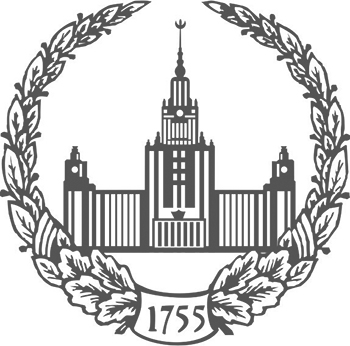Department of Ethnology, Faculty of History
-
Missionary Activities and/or Proselutism in the Social Work of US Christian Organizations among RefugeesMoscow University Bulletin. Series 8: History 2020. N 2. p.118-136read more1273
-
On the base of the author’s field research pursued in Georgia (USA) the article considers the social work of the churches and faith-based organizations among refugees. The goal of the article is to analyze the missionary component of the social service of Christian organizations and to determine if (or when) the missionary activities turn into proselytism. The balance of missionary and proselytism in the social work of the specific US religious organizations among refugees and the exposure of the factors helping to protect vulnerable groups from proselytism have not been investigated before. The article studies the connotations of the terms “missionary” and “proselytism” in the documents of the interfaith dialogue and the academic discourse, the views of the churches and the researches on the limits between these terms. In the documents of the interfaith dialogue the main criteria distinguishing missionary and proselytism are the methods of bringing the Gospel as well as the respect/non-respect of the free will and dignity of the mission’s addressees. The academic historiography accepts these criteria but also stresses that proselytism is connected to the deliberate attempt of changing a person’s identity and belonging. The article analyzes the social work of the churches and faith-based organizations in the context of the model of church-state relations in the USA. It demonstrates how the balance of the two main principles of this model: free exercise of religion and separation of church and state, makes the cooperation of the state with faith-based organizations not only possible but also fruitful. Such cooperation is not violation of the principle of the separation of church and state unless it involves proper religious matters, while the social service of churches and faith-based organizations is protected by the free exercise clause. The state appreciates high motivation, emotional involvement and responsibility of the faith-based organizations, doing the social work among refugees, but simultaneously it guarantees inadmissibility of proselytism towards vulnerable groups of people. There is a missionary component in the social service of the US Christian organizations among refugees, but typically various factors prevent its turning into proselytism.
Keywords: social service; missionary activities; proselytism; interfaith dialogue; refugees; church-state relations
-
-
Genealogy of University Ethnography: Department, Personalities, Tradition Transmission (to the 100th Anniversary of the Birth of Professor G.E. Markov)Moscow University Bulletin. Series 8: History 2023. N 3. p.97-121read more977
-
The article is a tribute of respect to the memory of Gennady Evgenyevich Markov, a major Russian ethnologist, archaeologist and historian of primitive society, doctor in history, professor of the Department of Ethnology, Faculty of History, Lomonosov Moscow State University. The authors provide a detailed analysis of the scientific contribution and life path of the outstanding Soviet/Russian scholar and place their narrative in a broad socio-cultural and intellectual context of the country and society. G.E. Markov’s biography is closely connected with the history of the Department of Ethnography/Ethnology at the Faculty of History, Moscow State University and serves as a serious basis for reconstructing the genesis of university ethnography and its dynamics over the course of nearly 85 years. Such a long period of existence of the university department and its sustainable effectiveness in training professional staff were essentially ensured by the high qualifi cation of scientific and pedagogical staff, reliance on solid theoretical and methodological foundations and interdisciplinarity, a combination of conservatism with flexibility and adaptability to the challenges of the time, the ability to preserve disciplinary continuity and ensure the transmission of the scholarly tradition. All these components of the successful development of university ethnology are subjected to a comprehensive and balanced examination in the article. G.E. Markov’s biography in all its typical and special manifestations forms the semantic core of the analysis and presentation. The authors offer their view on complex and sharply debatable issues of professional self-determination,.
Keywords: Department of Ethnology; Soviet ethnography; history of primitive society; religious studies; nomadology (nomadic studies); history of German ethnology and folk studies; interdisciplinarity
-
-
Religious identity, (self-)identification and statisticsMoscow University Bulletin. Series 8: History 2023. N 6. p.161-170read more825
-
The article examines the problems of religious statistics due to the multifaceted nature of religious identity and flexibility of religious identification and self-identifi cation. This is the cause of frequent diff erences in the estimated data on the number of followers of a particular confession. Population censuses could be a universal and comparable source, but not all countries ask about religious affiliation in the census. And even when there is a question on religion in the census, differences in wording (and differences in the meaning behind the wording) do not always allow for valid comparisons. Therefore, it is more common to find estimates of the number of followers of denominations based on various surveys. Religious identity is very multidimensional, and it often overlaps with other types of identity: ethnic, civil, local. A person can be associated with a certain faith by accepting the dogmatics, or it can be a set of practices and actions that define a way of life or certain milestones of the life cycle or moments/ periods of the religious calendar. Finally, the very feeling of belonging to cultural and historic tradition can bind a person to a particular faith. Therefore, in order to study quantitative indicators of religiosity, it is more convenient to operate with the procedural concepts of identifi cation and self-identifi cation. Religious statistics, or religious demography, was developed in the 1960s, i.e. in the period when the traditional forms of religiosity were being eroded, when religious dynamics in diff erent regions of the world were becoming more and more different, when it seemed that, at least in the West, religion was losing its position. Religious statistics require the adoption of some form of categorization. This article examines whether classifi cation should always be based on denominational principle alone. Religious statistics is a complex and delicate instrument, but nevertheless it draws some contours of religious structure, reveals the peculiarities of the religious situation and allows us to see the trends of its development.
Keywords: religious statistics; dynamics of religious composition; religious identification and self-identification; interdenominational churches; religions of the Global South
-
-
Russian Ethnology through the Prism of University ScienceMoscow University Bulletin. Series 8: History 2024. Vol.65. N 6. p.126-150read more226
-
It is only possible to comprehend the logic of the formation and development of ethnography (ethnology) as a discipline at Moscow University if one is aware of its context(s). Primarily, this is a disciplinary context, as evidenced by its long-term and decisive influence on ethnography within the university environment. The development of ethnology as a discipline has been shaped by a dynamic socio-historical context, which has exerted and continues to exert a significant influence on its evolution. The establishment and institutionalization of ethnology in Russia occurred in the second half of the 19th century. During the 1880s, two distinct trends began to emerge in the organization of ethnological education. One of these trends integrated ethnological education into the context of the natural sciences, while the other placed it within the broader historical and humanitarian context. In the early decades of the 20th century Russian ethnography possessed serious potential, including the ability for independent original theorization. During the Soviet era, ethnography experienced significant development, both as a scholarly discipline and as a formally recognized academic department. Since 1939, ethnography within the university has undergone phases of institutionalization (S.P. Tolstov and N.N. Cheboksarov). The concept of ethnographic education was formed, substantial scientific research and expeditionary activities were carried out, and the profession developed an attractive image. The stability and conservative ethos of Moscow University and its academic community enabled the department to successfully navigate the period of social and political turbulence (the late 1980s — 1990s), thereby preserving the foundational aspects of the professional training system and introducing necessary innovations (V.V. Pimenov). At the beginning of the twenty first century, ethnology as a discipline underwent a significant development, marked by an anthropological turn in research and methodology. The anthropological approach was integrated into the academic framework of professional education at Moscow University, serving as a complement to, rather than a replacement for, the prevailing ethnographic and ethnological methodologies (A.A. Nikishenkov, D.A. Funk). The Department of Ethnology has recently been experiencing an increase in student enrolment, while concurrently maintaining a judicious balance between ethnographic, ethnological and anthropological components. It is noteworthy that the department has adopted an interdisciplinary stance and has instituted measures to ensure the seamless transmission of professional tradition in close collaboration with academic science.
Keywords: ethnography at Moscow University, ethnology as a discipline, anthropological turn, academic and university science, ethnographic expeditions
-
-
Ethnocultural Identities through the Lens of Statistics: Russian Population Censuses, 1897–1937Moscow University Bulletin. Series 8: History 2025. Vol.66. N 1. p.158-173read more330
-
The article examines how the programmes of population censuses conducted in Russia between 1897 and 1937 reflected the dynamics of perceptions of major ethnocultural identities. Among the various forms of cultural identity in Russia, the most significant were linguistic, religious, and ethnic. However, the relative importance of these categories shift ed across different periods, as state priorities in promoting one or several of them evolved. The censuses of 1897, 1920, 1926, and 1937 vividly reveal transformations in this hierarchy of identities. Special attention is devoted to the incorporation of the category of national (ethnic) identity into census practices. In the Russian Empire of the modern era, an elite discourse emerged that proposed diverse interpretations of the nature of the ethnic (national): defining Russianness through its attributes — Orthodoxy and loyalty to the throne; defining Russianness through culture; and defining Russianness through notions of “race”, “stock”, or “blood”. For the broader Russian population, however, a presumption operated: Russian meant Orthodox and loyal to the throne (with the tacit implication of the Russian language). The study demonstrates that, in Soviet Russia, the significance of ethnic identity increased, facilitated both by the principle of national self-determination adopted by the new regime and by the administrative divisions, which were closely tied to nationality. It is therefore no coincidence that the 1920 census included, for the first time, a question on ethnic affiliation, framed as “narodnost” (“ethnic group”), which in the 1926 census was replaced with the term “nationality”. The analysis of the censuses conducted between 1897 and 1937 shows that the fundamental factors of ethnic identity in Russia — although not officially recognized in every period — were language and religion. The connection between language and ethnicity appears almost self-evident. The link between ethnicity and religion is less straightforward, yet despite the repression of religion it persisted, albeit muted; over time, however, in the structuring of identities (primary/derivative), religion and ethnicity exchanged their positions .
Keywords: population censuses, native language, religion, nationality, ethnicity, self-identification
-



